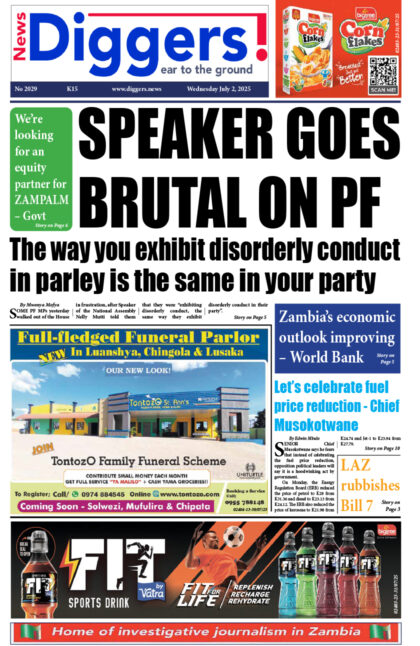Debt servicing has continued to pose challenges to Zambia’s international reserves, which have dipped to less than US $1.7 billion, says Bank of Zambia (BoZ) Governor Dr Denny Kalyalya.
And Dr Kalyalya has remained optimistic that the country’s inflation outlook will be within single digits over the forecast period despite upside risks posed by scarce availability of food and rising commodity prices.
Meanwhile, Dr Kalyalya argued that the kwacha’s volatility on the foreign exchange market experienced in September this year was mainly triggered by negative market sentiment.
Addressing questions following the BoZ Monetary Policy Rate (MPR) announcement in Lusaka yesterday, Dr Kalyalya said the country’s escalating debt is posing challenges to the international reserves position.
Zambia’s gross international reserves have plummeted to a 2018-low of US $1.63 billion as at end of September, 2018, representing 1.9 months of import cover, from US $1.82 billion, around 2.2 months of import cover by June 30, 2018, triggered by the need to finance the country’s debt servicing payments.
The country’s external debt stock as at close of the third quarter climbed to US $9.51 billion from US $9.37 billion at end of the second quarter of 2018, while the stock of domestic debt, mainly government securities, as at end of third quarter 2018 amounted to K54.6 billion from K51.9 billion at the end of second quarter 2018.
“…The other use is what we buy for projects and all that, but they don’t amount to huge amounts. But the predominant draw comes from the debt service. We have also had situations where pressures arising from the oil imports,” Dr Kalyalya told journalists at the central bank.
He, however, added that the BoZ is addressing the dipping reserves by foreign exchange purchases, among other key measures.
“Is that something we are concerned about? Of course, we are. To build international reserves, the BoZ continued to purchase foreign exchange directly from the market and through the Mineral Royalty Tax receipts. Cumulatively, the purchases amounted to US $345 million in the year to September, 2018,” Dr Kalyalya added.
“We are also making efforts to include in our holdings of reserves in gold, the bullion; we are in discussions with those who produce gold so that we can add it to our menu of reserves. So, there are all these efforts going on, but the challenge is that debt service has been elevated; that’s the number one drawdown in the reserves.”
And asked whether the central bank foresaw double digit inflation given the commodity price fluctuations and availability in consumer goods, such as maize, BoZ officials remained optimistic it would still be in single digits over the forecast period.
Zambia’s annual rate of inflation hit 8.3 per cent last month, the highest on record since November, 2016.
“We expect inflation to still be in single digits in this remaining part of the year. But the upside risks are quite strong; if they materialize, it could reach close to nine [per cent] or thereabout. But from where we sit, unless something really drastic happens, we don’t see it really going into double digits just yet; but shocks can happen,” Dr Kalyalya responded.
Meanwhile, he argued that the kwacha’s volatility on the foreign exchange market experienced in September this year was mainly triggered by negative market sentiment, among others.
The kwacha lost value by nearly 20 per cent alone on the back low dollar supply and at least two credit rating downgrades.
It traded at K11.81 and K12.04 by the end of September for bid and offer, down from an average of K10.99 and K11.06 per dollar earlier that same month.
“That shift in September was a source of concern. But then, you have to look at the factors. A lot of them had to do with negative sentiments; yes, we did expect the kwacha to come under pressure by the fact that the dollar will be strengthened, but it was magnified by these other factors. So, if we control on those factors, we should see relative stability in the exchange rate,” he said.
Earlier, Dr Kalyalya announced that the BoZ’s Monetary Policy Committee (MPC) decided to maintain the Monetary Policy Rate (MPR) at 9.75 per cent, while also keeping the Statutory Reserve Ratio (SRR) at five per cent, in a bid to induce lower interest rates and continue supporting economic growth.
According to Dr Kalyalya, commercial banks’ nominal average lending rates have only marginally reduced to around 23 per cent in the third quarter from 24.3 per cent in June.
“Lending rates have come down, but the concern we have is that, but at that level, is it not too high to stimulate economic growth? So, these high rates also have implications on those who have borrowed. So, we are happy that it is coming down, but we want it to come down a lot faster,” said Dr Kalyalya.



















